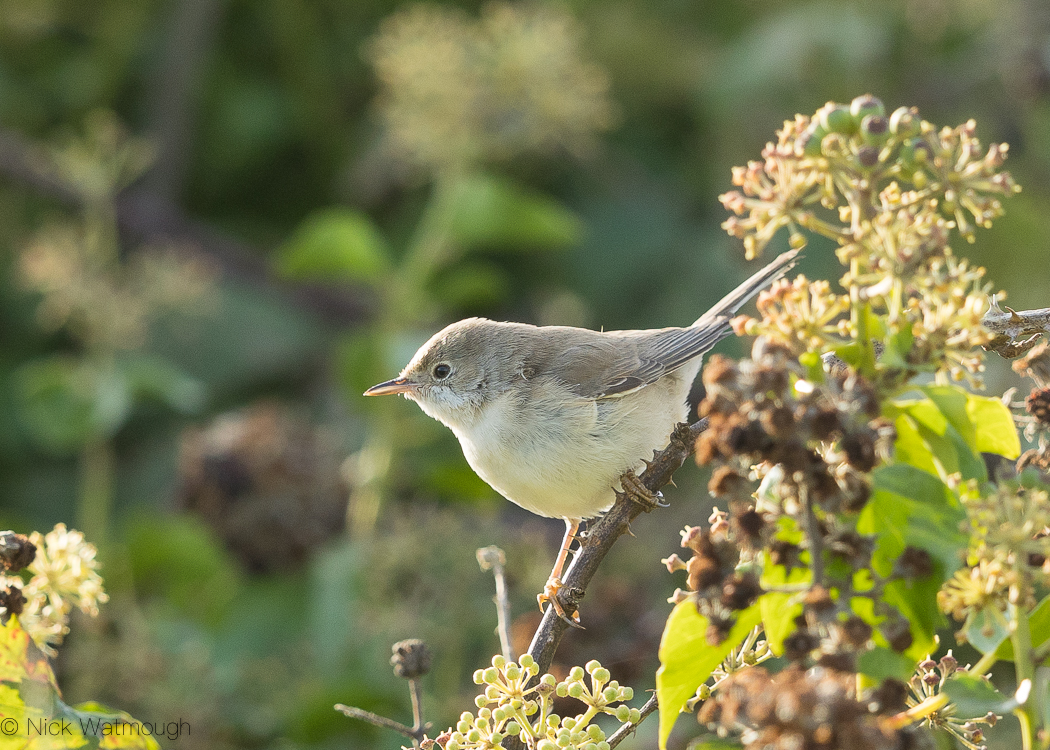Of the many new species that I saw on my first visit to Scilly in October 1983 a Subalpine Warbler on St Agnes was perhaps the least memorable. An unexciting first winter bird it just didn’t get the attention it deserved. It was a was a what we referred to as a “padder’. An expected scarce migrant overshadowed by the deluge of ultra-rare, and very attractive, Nearctic species.
One Divided by Three

Fast forward 37 years. Proposals by Svensson 2013 (1) subsequently refined by Zucon et al 2020 (2) led the IOC split the Subalpine Warbler complex into three. These species are Eastern Subalpine Warbler (Curruca cantillans), Western Subalpine Warbler (Curruca iberiae) and Moltoni’s Warbler (Curruca subalpina). I have been lucky enough to see and photograph all three species in their breeding ranges. Unfortunately, identification of extralimital birds is only possible by sequencing a sample of DNA or by analysis of their vocalisations. I have seen at least half a dozen “Subalpine” Warblers in the UK . Yet I only the know the identity of one – the Moltoni’s Warbler that Dave Andrews found on Blakney Point in June 2018. Others such as the female Keith Regan and I saw on Fair Isle in June 2000 remain unassigned. At the time we simply did not know what to look for!
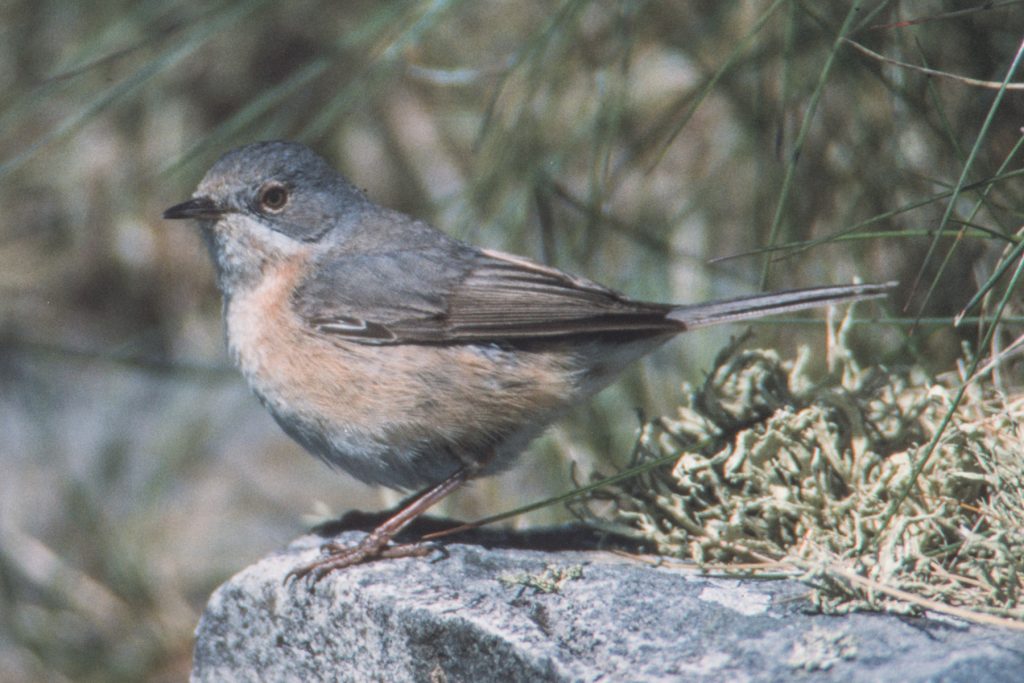
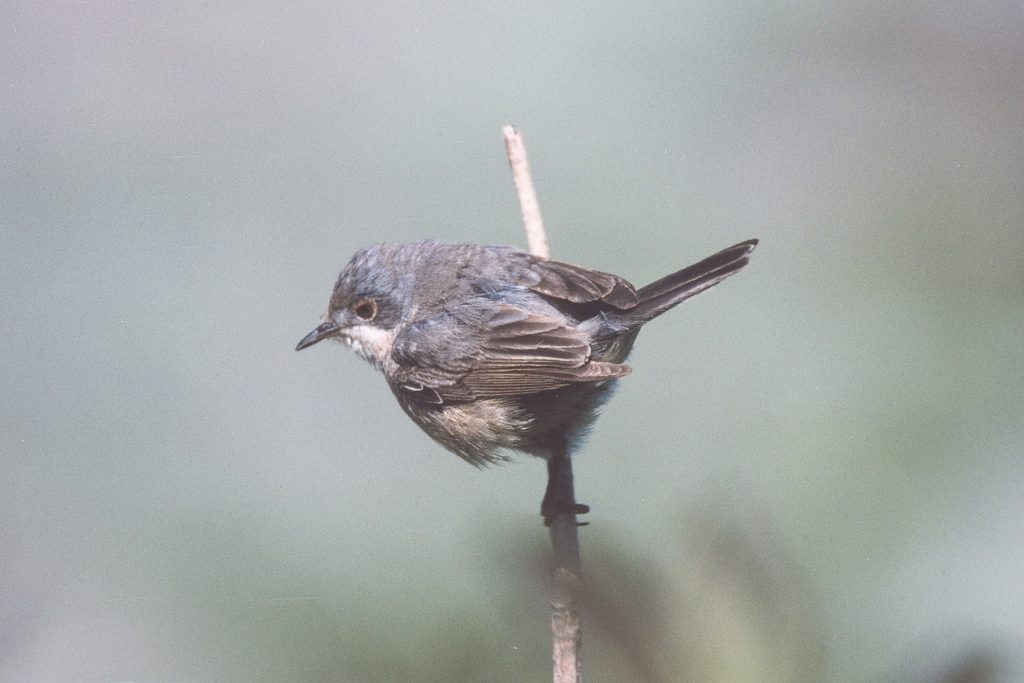
This year’s model!
On the morning of 29th October 2021 Adam Hutt found a first calendar year (1cy) Subalpine Warbler near Content at the North end of St Mary’s. When I arrived in the early afternoon the bird, which had been showing well, headed off on a circuit of nearby hedges. Fortunately I relocated it some nearby gorse, and managed a few record shots whilst attempting to direct other latecomers. That evening I posted these on Twitter
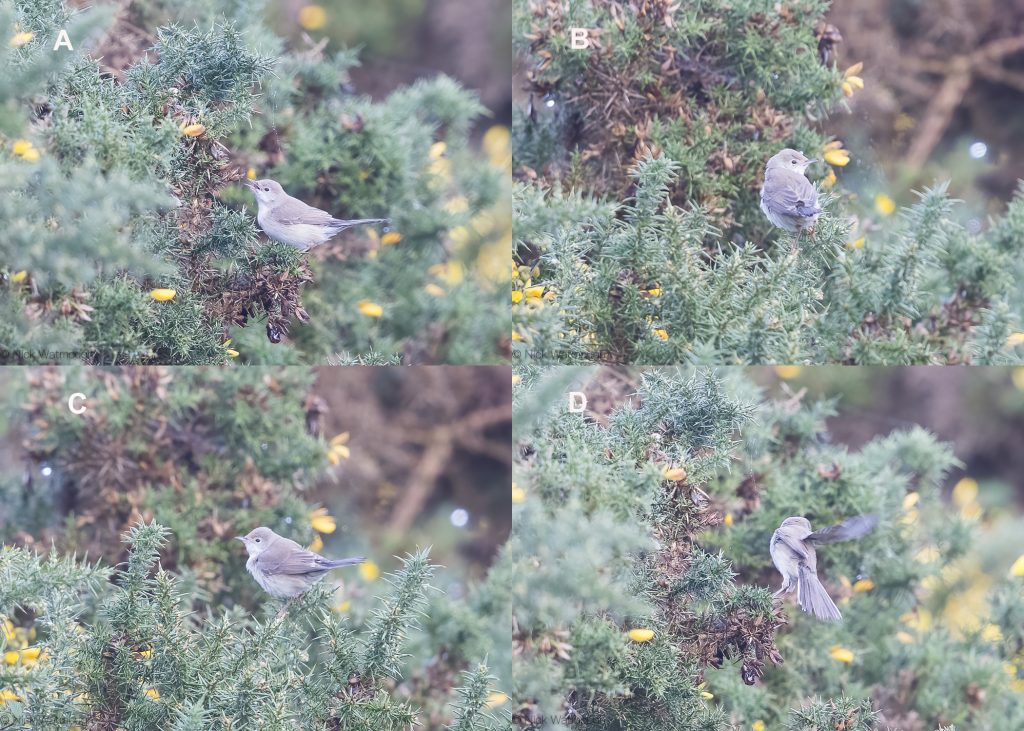
Blinded by the light
The strong low sun accentuated the impression of a pale grey Curruca warbler with plain tertials and a black tail (Fig 3 A). Unexpectedly this prompted some online questions as to whether Ménétries’s Warbler (Curruca mystacea) had been excluded. However, an overnight WhatsApp conversation with Yoav Perlman dispelled this idea. Other images (Fig 3 B and C) showed contrasting centres to the tertials a pro-“Subalpine” feature. Luckily a series of images obtained by Matt Hobbs in different light showed the overall warmer tones and put thoughts of Ménétries’s to bed.
Once out of the Ménétries’s rabbithole most observers felt this was a Western Subalpine Warbler (WSW) based on call. A persistent single syllable tack. Such vocalisation clearly excludes Moltoni’s Warbler and Eastern Subalpine Warbler (ESW) ssp albistrata. Unfortunately, it is difficult to exclude nominate ESW ssp cantillans without making spectrograms to analyse the call (3).
Curiously, the dark adult tail, which prompted thoughts of Ménétries’s, held a clue to the bird’s specific identity. I returned the next morning with a view to obtaining better images and sound recordings from which I could make a spectrogram.
A Trick of the Tail
My original image of the tail (Fig 3 D) left me a little confused as the outer tail feathers (T6/5) seemed shorter than the central tail feathers. Curiously whilst they exhibited an adult type pattern, T5 seemed to have too much white in it for a classic Western. This image and associated crop (inset) confirmed that impression.
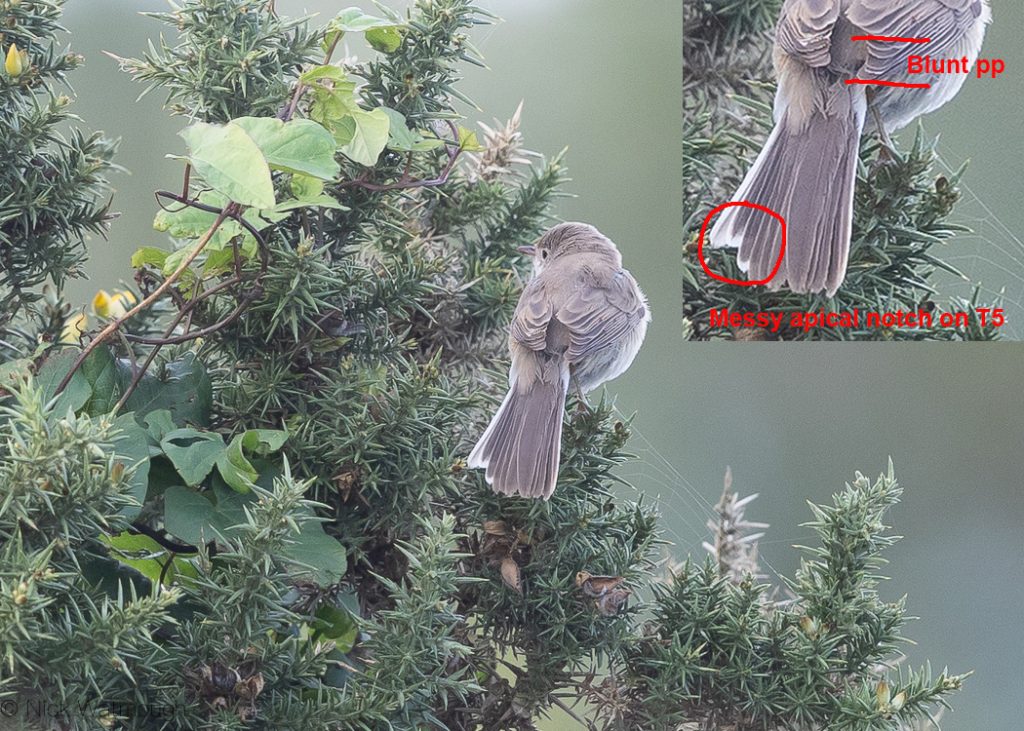
When the possibility of Ménétries’s was raised reference was made to a tricky Curruca Warbler seen on Linosa, Italy in November 2012 (5). Similarly this 1cy individual had replaced its spiky sandy coloured juvenile tail feathers with dark grey adult feathers. Moreover T6 on the Linosa individual was wholly white and T5 had a small white apical notch. However, it did not call like a Moltoni’s. This led the Italian observers, who were very familiar with ESW ssp cantillans and Moltoni’s Warbler, to consider Ménétries’s. However further analysis of their images did not support this conclusion and that in fact it was a WSW ssp inornata. It must be remembered that this form is now included in the the monotypic taxon Curruca iberiae (see Fig 1).
What about the Scilly bird? In common with the Linosa individual dark adult tail feathers contrasted with the pale body. Interestingly the white on T5 of the Content bird was somewhat different. In particular the extensive white on the inner web, and a significant white outer margin created a “messy” apical notch (Fig 4). This is not an ESW type of tail pattern. However it is very close to that of an acceptable adult male Western trapped on Fair Isle on 9th May 2016 (5). Sadly this is not enough to be sure! As an illustration a silent bird caught at Spurn in May 2020 exhibited a WSW type tail. Contrarily molecular analysis showed it to be an ESW ssp cantillans – scary stuff (6).
Getting to the Point
The images of the Scilly bird also allowed evaluation of the bird’s wing structure (Fig 4 inset). In essence they reveal a blunt wing-tip formed formed by 5/6 unevenly spaced primaries (Fig 4 inset). This is indicative of WSW. By comparison ESW would have long narrow primary projection formed by 7/8 evenly spaced feathers (7). At the present time this feature is not regarded as diagnostic. However once Moltoni’s is excluded, on the basis of call, it appears to be strongly indicative of identity.
Changing Tack
Although the evidence of the tail pattern and wing structure is persuasive it is, according to current BBRC guidelines, insufficient to conclusively prove WSW. Unfortunately, and despite best efforts, nobody could retrieve a faecal sample for molecular analysis. The alternative was to obtain a sound recording/spectrogram. I was fortunate to obtain a short (4 second) cut (listen here) and made a spectrogram.
Interrogating the Xeno-canto archive I found few recordings of calls definitely attributable to each taxon of interest. A problem compounded by XC using outdated taxonomy. I did not look for a Moltoni’s recording as it was clearly excluded by the call. In the end I identified three representative recordings for the comparative purposes. Click on the links to listen:
XC369011 – Western Subalpine Warbler Curruca iberiae (Near Monpellier, France)
XC413121 – Eastern Subalpine Warbler Curruca cantillans cantillans (Tuscany, Italy)
XC652064 – Eastern Subalpine Warbler Curruca cantillans albistriata (Thessalia, Greece)
I selected a 4 second cut from each recording and prepared a spectrogram. To aid comparison these are presented using the same axes as for the Scilly bird.

Sounds right?
The Scilly bird certainly never gave the double call associated with ESW ssp albistrata (panel D). To my eyes the spectrogram of the Scilly individual (Panel A) exhibits the “dense vertical structure” of WSW calls (panel B) noted by Menzies et al (3). Both spectrograms reflect the hard tack uttered by the Scilly bird and XC369011. To my ears this is quite different to the softer “t’chek” note of ESW ssp cantillans (XC413121). This difference is reflected in the spectrogram which appears to be more “open”. In other words it is less dense and possible to pick out individual harmonics. Note also the range of frequencies represented is somewhat less that those present in the Scilly bird and XC369011. Interestingly spectrograms of the calls of the Linosa bird (4) appear consistent with its identification as WSW.
Summary
In conclusion a 1cy Subalpine Warbler sensu lato was present on St Mary’s Isles of Scilly between 29th October and 3rd November 2021. DLSR images clearly showed an adult type tail pattern coupled with a short blunt primary projection. Generally these are features associated with Western Subalpine Warbler. Analysis of a recording of the call appears to support the identification of this bird as a Western Subalpine Warbler.
References
- Svensson, L. (2013) A taxonomic revision of the Subalpine Warbler Sylvia cantillans Bulletin of the British Ornithologists’ Club 113:240–248
-
Zuccon, D., et al (2020). Type specimens matter: new insights on the systematics, taxonomy and nomenclature of the subalpine warbler (Sylvia cantillans) complex. Zoological Journal of the Linnean Society 190: 314-341 doi:10.1093/zoolinnean/zlz169
-
Menzie, S., Gil-Velasco, M., & Collinson, J. M. (2015). First genetically confirmed Eastern Subalpine Warbler Sylvia cantillans for Sweden. Ornis Svecica, 25(1–2): 40–44. doi.org/10.34080/os.v25.22554
-
Corso A. et al A Subalpine Trap: an interesting “cantillans” makes things hard! in Birding Frontiers ed Martin Garner
-
Subalpine Warblers on Fair Isle downloaded from Fair Isle Bird Observatory and Guesthouse
- Eastern Subalpine Warbler in Spurn Bird Observatory News 8th August 2020
- Corso A. et al (2021) Identifying Western Subalpine Warbler and Eastern Subalpine Warbler by primary projection Dutch Birding 43: 45-50

